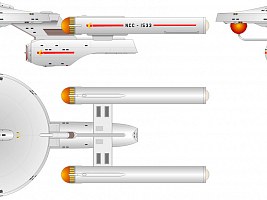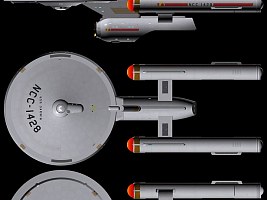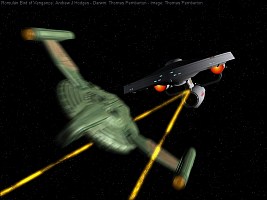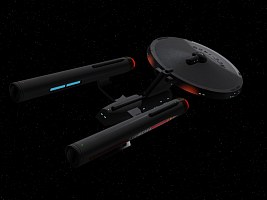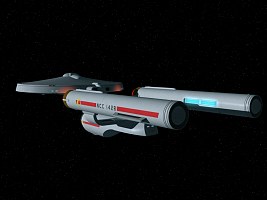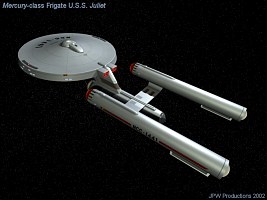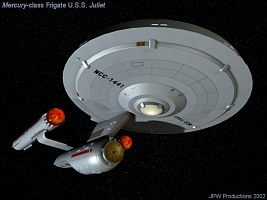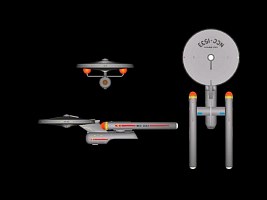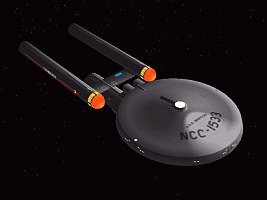Mercury Class
The Mercury class is often regarded as a somewhat smaller cousin of the Asia class, but the similarity is only superficial and the two designs do not have much in common. Mercury-class ships were not primarily developed for exploration but rather for short-term science missions and military fleet operations. And in the course of its development the originally planned internal volume shrank by almost 25%, as a smaller vessel with less crew was deemed more efficient for the limited tasks. This is why the classification that initially called the Mercury a "fast cruiser" was later changed to "frigate".
While the Mercury class mostly relied on simple and proven technologies for economical reasons, its warp propulsion system was the fastest of its time (safe for warp drive testbeds). The design did not provide enough room for a bulky shuttle bay, so two hatches were installed on the aft ventral side to release and pick up the shuttles.
In the 2220s, the first ships of the Mercury class took part in a number of battles against the Klingons, the Orions and, unbeknownst to the general public, Romulan intruders who posed as Orions. After the obsolete ships of the Hercules class had been rebuilt to tenders and the aging Hyperions were due for decommissioning, the Mercury class started a surprising second career and gradually took over more and more tasks of typical explorer- or cruiser-type vessels, in spite of its limited scientific and diplomatic capabilities. Since the 2230s the fast ships of the Mercury class operated far beyond the Federation borders and established several first contacts with alien civilizations.
The stint in space exploration should not last long, however. After the significantly larger and better equipped Constitution class had been introduced, the Mercury class was withdrawn from space exploration and served mainly within the Federation space, often only as escorts. More ships of this class were built until as late as 2255. Nevertheless the last ships of the class were decommissioned as soon as in 2279, when it was decided not to upgrade the Mercury's propulsion system in the same fashion as on several other ship classes. The general consensus that the ships were overall too small to be operated efficiently may have facilitated Starfleet Command's decision to retire the Mercury class.
Gallery
Datasheet
| Class specifications Ship type: Frigate Length: 184m Width: 82m Height: 43m Crew complement: 179 Max. speed: Warp 5.8 First commissioned in 2219 |
Commissioned ships USS Mercury NCC-1288 USS Arizona NCC-1296 USS Tristan NCC-1360 USS Greenwich NCC-1361 USS Edison NCC-1362 USS Orion NCC-1424 USS California NCC-1425 USS Hamlet NCC-1426 USS Icarus NCC-1427 USS Darwin NCC-1428 USS Romeo NCC-1440 USS Juliet NCC-1441 USS Pegasus NCC-1532 USS Babylon NCC-1533 USS Andromeda NCC-1534 USS Atlantis NCC-1535 USS Washington NCC-1576 USS Pluto NCC-1577 USS Attica NCC-1578 |
Credits
Thanks to Thomas Pemberton, Andrew Hodges, Jan Seebald and Jay Hagen for their 3D models.






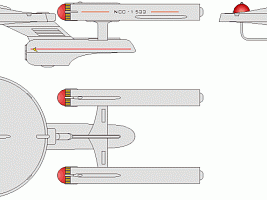
 Preliminary three-view schematics
Preliminary three-view schematics